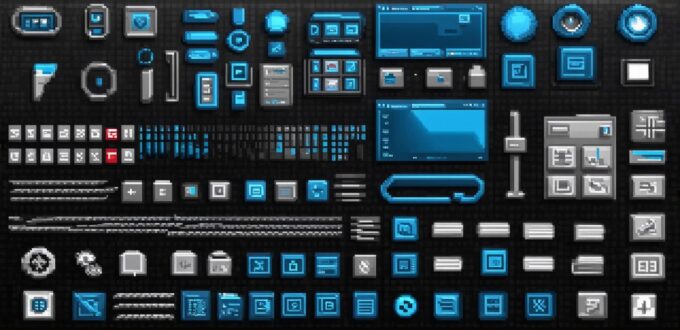Software plays a vital role in our daily lives, from the smartphones we carry in our pockets to the computers that power our homes and businesses. With so many different types of software available, it can be overwhelming for developers to determine which ones are best suited to their needs. In this article, we will provide a comprehensive guide to the different types of software, including their features, benefits, and use cases.
1. Operating Systems:
Operating systems (OS) are the foundational software that run on all computers and mobile devices. They manage the hardware resources of the device and provide an interface for users to interact with the system. Examples of popular operating systems include Windows, macOS, Linux, iOS, and Android. Each OS has its own unique features and benefits, which make it suitable for different types of use cases.
For example, Windows is widely used in businesses due to its robust security features, while Linux is preferred by developers for its flexibility and open-source nature. Windows OS is also commonly used in gaming and media production, while macOS is popular among designers and creative professionals.
2. Productivity Software:
Productivity software is designed to help users create, edit, and manage documents, spreadsheets, presentations, and other types of digital content. Examples of productivity software include Microsoft Office (Word, Excel, PowerPoint), Google Docs, Adobe Creative Suite (Photoshop, Illustrator, InDesign), and Slack. These tools are essential for businesses and individuals who need to collaborate on projects and share information efficiently.
Productivity software can also help users automate repetitive tasks, streamline workflows, and improve productivity. For instance, Microsoft Office has a built-in macro feature that allows users to create custom scripts to automate repetitive tasks, while Google Docs offers real-time collaboration and version control, which enables teams to work together seamlessly.
3. Multimedia Software:
Multimedia software is used to create and edit digital content such as videos, images, audio, and 3D models. Examples of multimedia software include Adobe Premiere Pro (video editing), Photoshop (image editing), GarageBand (audio editing), and Blender (3D modeling). These tools are essential for creatives who want to showcase their skills and produce high-quality content.
Multimedia software can also be used for educational and training purposes, as well as for creating virtual reality experiences. For instance, Blender is an open-source 3D modeling software that can be used to create interactive simulations and animations, while Adobe Premiere Pro is a professional-grade video editing software that enables users to create high-quality videos for marketing and advertising purposes.
4. Web Development Software:
Web development software is used to build and manage websites, web applications, and mobile apps. Examples of web development software include Visual Studio Code (code editor), Sublime Text (code editor), WordPress (content management system), and Bootstrap (web framework). These tools are essential for developers who want to create dynamic and responsive websites that provide a seamless user experience.
Web development software can also be used for e-commerce, blogging, and other types of online businesses. For instance, WordPress is a popular content management system that enables users to build and manage websites with minimal technical knowledge, while Bootstrap is a web framework that provides pre-built components and templates for rapid website development.
5. Database Management Software:
Database management software is used to organize, store, and manage large amounts of data. Examples of database management software include MySQL (open-source), Oracle (enterprise), and Microsoft SQL Server (enterprise). These tools are essential for businesses that need to manage complex data sets and perform advanced analytics.
Database management software can also be used for scientific research, financial modeling, and other types of data-intensive applications. For instance, MySQL is an open-source database management system that is widely used in web development and e-commerce, while Oracle is a proprietary enterprise-grade database management system that provides advanced security features and scalability.
6. Networking Software:
Networking software is used to manage and secure computer networks, enable file sharing, and facilitate communication between devices. Examples of networking software include Windows Server, Linux, and macOS Server. These tools are essential for businesses that need to connect multiple devices and manage network traffic.

Networking software can also be used to enable remote work and telecommuting, as well as to secure data transmitted over the network. For instance, Windows Server is a popular operating system for small-scale networks, while Linux is an open-source networking software that provides advanced security features and scalability.
7. Game Development Software:
Game development software is used to create video games and other interactive applications. Examples of game development software include Unity, Unreal Engine, and Construct. These tools are essential for game developers who want to create engaging and immersive experiences for players.
Game development software can also be used for educational purposes, such as teaching programming and game design skills. For instance, Construct is a beginner-friendly game development software that enables users to create 2D games without requiring any coding knowledge, while Unity is a popular game engine that supports both 2D and 3D game development.
Conclusion:
In conclusion, there are many different types of software available, each with its own unique features, benefits, and use cases. Understanding the different types of software and their suitability for specific tasks is crucial for businesses and individuals to make informed decisions about which tools to use. By using the right software, businesses can streamline their operations, improve productivity, and provide better services to their customers. Similarly, individuals can use software to enhance their learning, creativity, and productivity.
